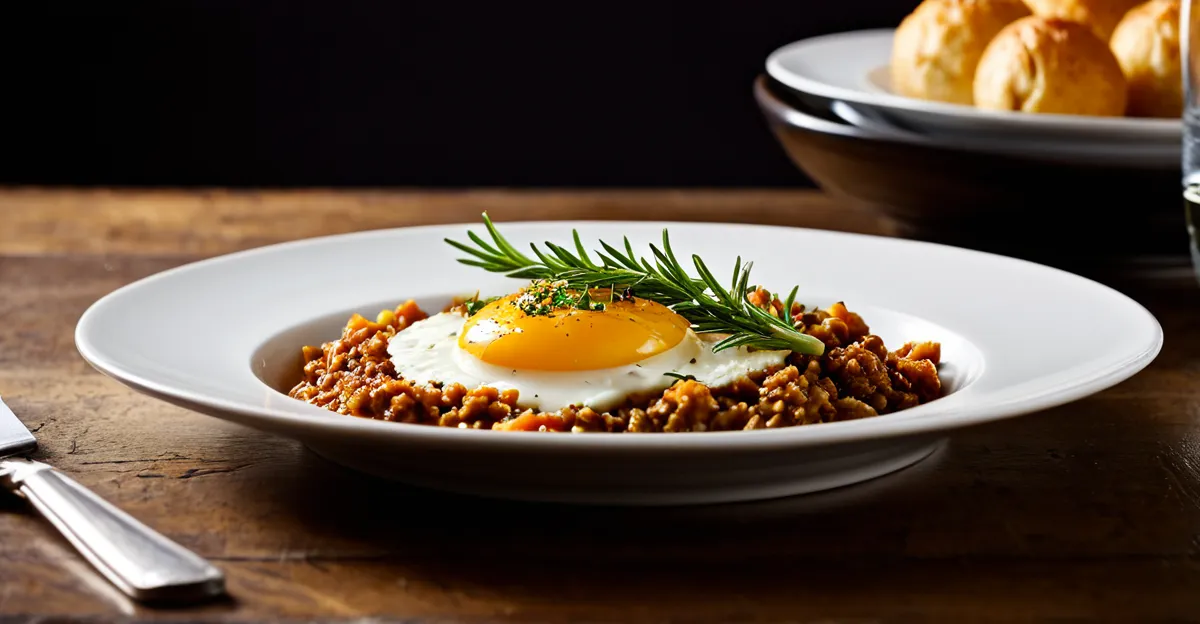Overview of Traditional British Dishes and Their Culinary Heritage
Traditional British cuisine is characterized by its hearty, straightforward flavors and use of locally sourced ingredients, reflecting centuries of British food history. Heritage dishes often emphasize seasonal produce, meats like lamb or beef, root vegetables, and wholesome grains. Cooking methods such as roasting, boiling, and baking are prevalent, preserving the natural taste of ingredients while creating comforting textures.
Key ingredients include potatoes, cabbage, and various cuts of meat, underscoring the simplicity and rustic nature typical of British gastronomy. Flavors tend to be mild yet robust, often enhanced by herbs like thyme and rosemary or sauces such as gravy and mint sauce.
Also to discover : How can you elevate a traditional black pudding dish with contemporary flavors?
British food history reveals how these dishes evolved through socio-economic shifts, agricultural advancements, and cultural exchanges. For example, the introduction of the Sunday roast with Yorkshire pudding dates back to the 18th century, symbolizing family gatherings and tradition. Understanding these culinary elements offers insight into how British cuisine maintains its identity while adapting through time.
This rich heritage of traditional British dishes highlights a balance between nourishment and comfort, making it a cornerstone of British gastronomy with enduring appeal.
Have you seen this : What are the steps to making a delicious spotted dick?
Foundational Techniques from Traditional British Cooking
Traditional British cuisine relies heavily on British cooking techniques that have been refined over centuries. Among these, roasting stands out as a central method, especially for preparing meats like beef and lamb, where even heat creates tender, flavorful results with a crisped exterior. Stewing is another key technique, ideal for tougher cuts that require slow cooking to develop rich, hearty flavors common in classic British dishes. Baking remains essential, covering everything from bread to savory pies, showcasing a heritage preparation style deeply embedded in British gastronomy.
Sauce-making is equally important, with gravies and classic sauces such as mint or redcurrant providing essential layers of flavor. Techniques for creating perfect pastry, particularly for pies and tarts, trace back through British food history, emphasizing flaky textures and balance.
Regional variation plays a significant role; for example, coastal areas may focus more on steaming fish, while northern regions favor slow braising. This diversity enriches British cooking techniques, preserving traditional methods while adapting them to local ingredients and tastes. Mastery of these foundational techniques is key to understanding and appreciating the depth of British cuisine’s culinary heritage.
Integration of British Culinary Elements into Modern Cuisine
Traditional British cuisine forms the backbone of modern British cooking, where culinary innovation blends heritage with contemporary tastes. Classic dishes like steak and kidney pudding or roast lamb are being reinvented through recipe adaptation, using new cooking methods and presentation styles to appeal to today’s diners.
How does modern British cooking incorporate historical elements? It often retains core flavors and ingredients while introducing novel techniques, such as sous-vide roasting or creative garnishes. British food history enriches this process by informing chefs about the significance of traditional components, ensuring respect for flavor profiles while enabling evolution.
Fusion dining exemplifies this balance, integrating traditional British ingredients like root vegetables or game meats into internationally influenced recipes. Culinary innovation in this context celebrates the heritage preparation styles by modernizing texture, temperature, or plating without losing authenticity.
Moreover, recipe adaptation encourages the use of seasonal, locally sourced British produce, aligning with sustainable trends. As British gastronomy evolves, the integration of culinary elements preserves tradition while embracing diverse influences, making modern British cooking both a tribute and a transformation of its roots. This dynamic approach invites both chefs and home cooks to explore British flavors in fresh, exciting ways.
Impact of Traditional British Cuisine on Global Culinary Practices
Traditional British cuisine has significantly influenced global food trends through the export of its ingredients and British cooking techniques. Staples such as roast beef, Yorkshire pudding, and fish and chips have transcended UK borders, becoming iconic dishes appreciated worldwide. This widespread adoption illustrates how British culinary heritage forms a foundation for many international menus.
British influence extends beyond dishes to cooking methods like roasting and baking, which are integral to numerous global culinary traditions. For example, the technique of slow roasting meats finds parallels in other cuisines, yet retains distinct British characteristics in seasoning and presentation.
Cross-cultural cooking benefits from collaborative culinary projects where chefs fuse British heritage dishes with international flavors. This has led to innovative recipes that respect heritage preparation styles while embracing global tastes, expanding the reach of British gastronomy.
Such exchanges contribute to an evolution in international cuisine, reflecting the adaptability and enduring appeal of British culinary principles. Thus, British food history not only preserves tradition but also actively shapes diverse contemporary cooking across the world. The ongoing transformation highlights British cuisine’s role as a vital contributor to global culinary practices.







